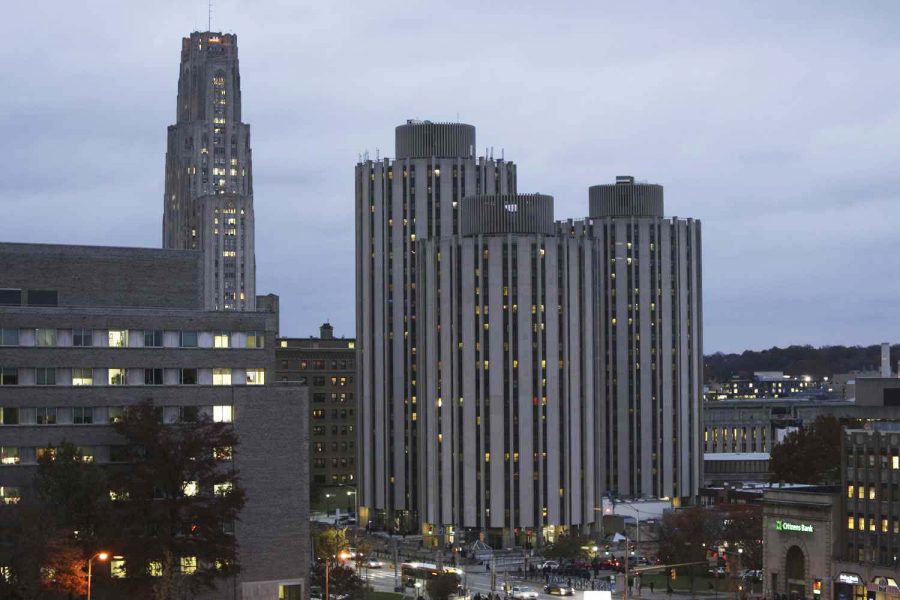Students on three Tower B floors quarantined, Pitt to test entire building for COVID-19
October 5, 2020
Pitt placed around 60 students across three floors of Litchfield Tower B in quarantine Friday evening and will test the building’s roughly 360 total residents for COVID-19, following an increase in virus cases among building residents over the last several weeks.
Pitt spokesperson Pat McMahon said Friday that there have been nine positive cases reported between Sept. 23 and Friday in the Central Oakland residence hall, which is Pitt’s largest. The University included five in last Tuesday’s case report and two in Friday’s case report, but did not include the remaining two received Friday in Friday’s case report.
When asked whether the cases constitute a cluster, defined as a group of five or more cases that can be epidemiologically linked, McMahon said Monday evening that the University is still conducting contact tracing for the most recently reported cases to better understand if the Tower B cases are indeed linked.
“Nonetheless, in light of the common resident hall, we are proceeding cautiously and continuing our investigation,” McMahon said.
McMahon said the students on the three quarantined floors are not permitted to leave their room, except “to use the bathroom, to get a COVID test or for medical emergencies.” He added that meals are delivered daily to the quarantined students. Students who have tested positive have been moved to Pitt’s isolation housing, located outside of Tower B.
McMahon also said that residents in Tower B’s 19 other floors are being asked to socialize only with members of their pods or friends on their floor. He said the University will test all Tower B residents for COVID-19, beginning Monday at 9 a.m.
Data collected by The Pitt News. Original data collection by Ryan Yang, Online Visual Editor. Archival data by Spotlight PA and the Philadelphia Inquirer. Graph by Jon Moss, Editor-in-Chief.Eric Macadangdang, the president of Student Government Board, said he did not get word about the measures put in place for Tower B until Monday afternoon.
“Obviously, I would love to know this information beforehand,” Macadangdang said. “But I know that more than anything, I wanted to make sure they acted upon it and I’m happy to hear that they did, ever since they started seeing that trend last week.”
Macadangdang added that he thought the University responded well to the situation with what he described as “very strong” measures.
“It’s not going to be the most ideal situation, especially for the kids in Tower B, but it is what it has to be in terms of the health and safety of us all,” Macadangdang said. “Hopefully we can make sure that the University is up and at it in making sure that the accommodations and the help desk, the resources they could give to those students in quarantine and in isolation are good.”
Macadangdang also said it is “extremely important” to make sure students are part of the contact tracing process, and assist in these efforts if called upon.
“It only helps the community whenever people comply and take part in the process,” Macadangdang said.
McMahon said as a matter of practice, Pitt does not make “broad notifications” about situations that give the University “concern.” He added that “appropriate notifications” were made to members of the administration, and Pitt’s Resilience Steering Committee, which includes student leaders, received a briefing Monday afternoon.



